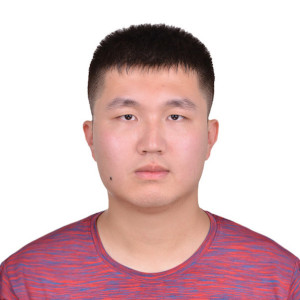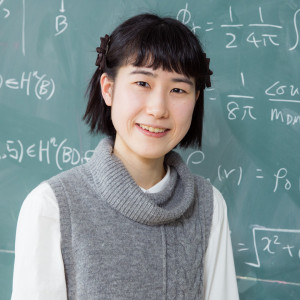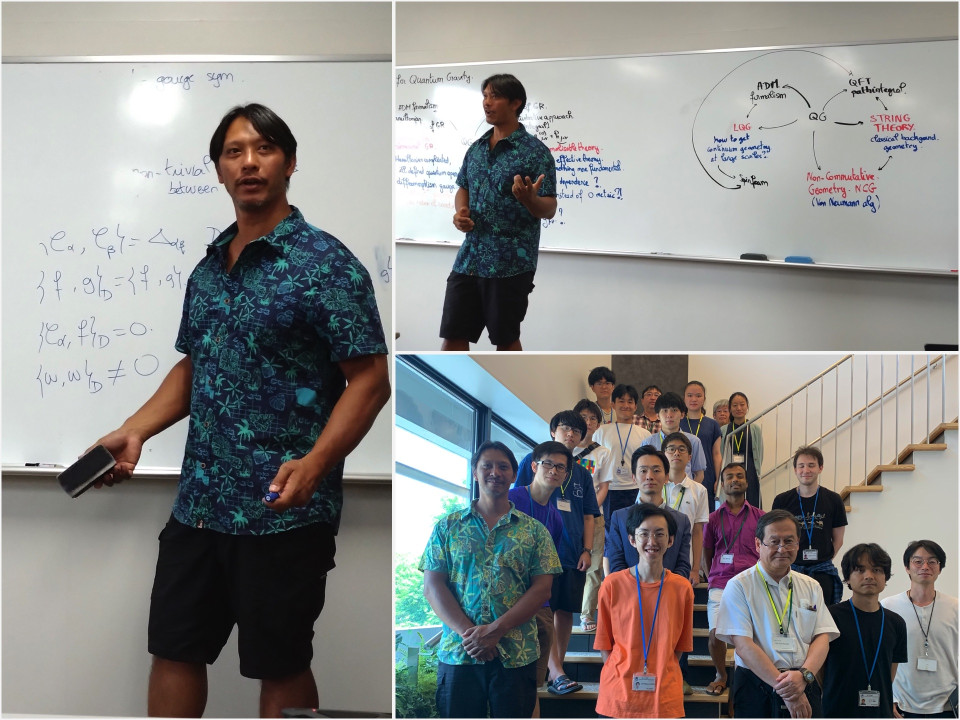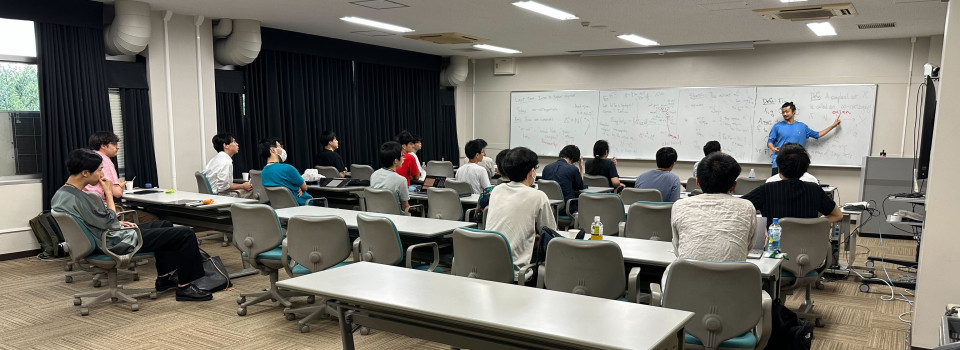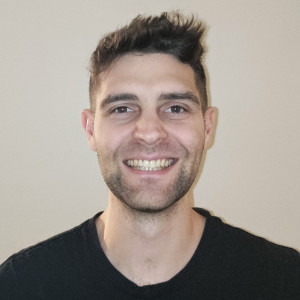Volume 264
Back to Newsletter List
Award
Yixin Guo received two awards for his presentation
2023-08-17
Yixin Guo (iTHEMS JRA/Univ. Tokyo) received two awards for his presentation on Aug. 10 at the A3F Summer School 2023.
- Outstanding presentation award at Young Scientists Session at the A3F Summer School 2023, with the title "Cooper quartet correlations in infinite symmetric nuclear matter".
- Asian Nuclear Physics Association & AAPPS-DNP Award for Young Scientist (1st place) for his outstanding presentation "Cooper quartet correlations in infinite symmetric nuclear matter".
Congratulations, Yixin!
Reference
- Yixin Guo, Hiroyuki Tajima, Haozhao Liang, Cooper quartet correlations in infinite symmetric nuclear matter, Phys. Rev. C 105, 024317 (2022), doi: 10.1103/PhysRevC.105.024317
Award
Nagisa Hiroshima received "Toyama Daiichi Bank Scholarship Foundation Award"
2023-08-10
Nagisa Hiroshima (Toyama Univ. and iTHEMS Visiting Scientist) received "Toyama Daiichi Bank Scholarship Foundation Award (Incentive Award)".
The citation for the award is "Theoretical research on dark matter using astrophysical approach".
The award ceremony was held on July 7, 2023 at Toyama Daiichi Bank Head Office.
The certificate and catalog of research grants were handed over to Nagisa by the Vice Governor of Toyama Prefecture.
Congratulations, Nagisa!
Seminar Report
3rd QGG Intensive Lectures: Spinfoam path integrals for Quantum Gravity by Etera Livine on July 26, 2023
2023-08-16
The 3rd Intensive Lecture by iTHEMS’ Quantum Gravity Gatherings concluded with resounding success. Around 30 enthusiasts, including students, junior and senior researchers from various disciplines, convened at the RIKEN Wako Campus to learn and discuss spinfoam quantum gravity.
Prof. Etera Livine from ENS Lyon, our distinguished lecturer this time, delivered a fantastic 3-day lecture about the spinfoam approach to quantum gravity (QG). He began with a wonderful introduction explaining why physicists have long sought the theory of quantum gravity: the ultimate theory that unifies physics at both macroscopic and subatomic scales. Prof. Livine highlighted various existing candidates for quantum gravity theory and forged connections among these diverse approaches. Regarding the main topic, he started with the basics of loop quantum gravity and clearly explained the origin of the fundamental discreteness of spacetime. In the latter half of his lecture, he detailed how to construct the spinfoam path integral for QG in 3D before moving on to the 4D case. He concluded his lecture by discussing the limitations of this approach and outlining future directions. Throughout his lecture, he consistently elaborated on the mathematical similarities between these QG approaches and other areas of physics, such as condensed matter physics. This allowed the audience to grasp the current advancements in the field, recognizing how their areas of expertise, seemingly distant from quantum gravity, could intricately interlace with it.
This event presented a great opportunity for fostering interdisciplinary research, as it brought together people with various interests, including physicists working on high-energy physics, gravity, cosmology, and condensed matter systems, as well as pure mathematicians. Everyone exhibited keen enthusiasm for quantum gravity, creating an atmosphere of unity and togetherness that permeated the room. Many interesting questions were posed during the lecture, and participants enthusiastically engaged in discussions during coffee breaks. Some of them also shared their stories and work during the short talk sessions, and everyone enjoyed the banquet on the second day. Overall, this event provided a relaxed and active platform for learning, offering an exceptional opportunity to strengthen connections and friendships among participants, particularly those in the early stages of their research careers.
Reported by Puttarak Jai-akson
3rd QGG Intensive Lectures: Spinfoam path integrals for Quantum Gravity
July 26 (Wed) - 28 (Fri) 2023
Seminar Report
Higher Algebra in Geometry by Hiro Lee Tanaka on July 31, 2023
2023-08-11
8 days of introductory lectures on Higher Algebra (infinity categories) were given by Dr. Hiro Lee Tanaka (Texas State University). Recent developments on infinity-category theory and their applications have received attraction from various areas of mathematics, including geometric topology, symplectic geometry, and algebraic geometry. The lectures were targeted to students and researchers interested in applications of infinity-categorical tools.
The first day was devoted to non-specialists, where Dr. Tanaka introduced the concept of associativity and homotopies, and explained how they naturally lead us to the ideas of infinity-categories. From the second day, Dr. Tanaka introduced the basic concepts of infinity-cagetories together with familiar examples. In the second week, some of the works of Dr. Tanaka were given as applications of the ideas of inifity-categories.
His aim was to show us that these concepts are not mere abstractions, but are accessible and usefully applicable to concrete questions of geometry. The participants also shared their own works and interests after the lectures, and lively discussions took place.
Reported by Taketo Sano
Higher Algebra in Geometry
July 31 (Mon) - August 10 (Thu) 2023
Upcoming Events
Workshop
Exploring 2D Quantum Spacetime Based on Causal Dynamical Triangulations
August 21 (Mon) - 23 (Wed) 2023
Yuki Sato (Associate Professor, National Institute of Technology (KOSEN), Tokuyama College)
This is the fourth event by the Quantum Gravity Gatherings (QGG) Study Group at RIKEN iTHEMS. For this event we have invited Prof. Yuki Sato, National Institute of Technology, Tokuyama College, to give pedagogical lectures on the causal dynamical triangulations approach to quantum gravity. We wish this event to provide insights to researchers in related fields.
The causal dynamical triangulations formalism appears to be one of the most promising constructive approaches to quantum gravity: possessing deep links with the asymptotic safety programme and Hořava-Lifshitz gravity, causal dynamical triangulations appears to avoid many of the well-known pathologies characteristic of its Euclidean analogue. As an example the emergence of spacetime geometry remains possible in various spacetime dimensions. While many of the results in higher dimensions are understood only at the numerical level, the analytical study of the approach in two spacetime dimensions is relatively well developed; Yuki Sato is a leading expert on these latter developments and we are very lucky he has agreed to present the understanding of 2D causal spacetime coming from this approach in a manner consistent with the Quantum Gravity Gatherings philosophy.
This intensive lecture series is intended to be a lively and participatory event, not just a listening experience. For this reason, the number of participants will be limited to about 30 with priority given to graduate students and young post-docs; the intensive talk will be given in a face-to-face blackboard style (in English, no online streaming) to allow for informal and lively Q&A discussions. The program will also include short talk sessions, where interested participants can give a 5 min talk on a topic of their choice (their research, reviews on some works, what they want to study in the future, etc.). Registration is available via the dedicated website.
Venue: #435-437, 4F, Main Research Building, RIKEN Wako Campus
Event Official Language: English
Seminar
iTHEMS Biology Seminar
Landscape structure drives eco-evolution in host parasite systems
August 24 (Thu) 16:00 - 17:00, 2023
Jhelam Deshpande (Ph.D. Student, Biodiversity: dynamics, interactions and conservation team, Institute of Evolutionary Science of Montpellier, France)
As all biological and many artificial systems, hosts and their parasites are most often spatially structured. Besides this highly relevant spatial context, parasites may change through time due to to evolutionary processes, including mutation and selection. These facts imply that we must study host-parasite systems taking into account space and evolution. Past work has mainly focused on simple spatial structures, but how parasites evolve in realistically complex landscapes remains unclear, hampering the translation of theoretical predictions to real ecological systems.Therefore, we here develop an eco-evolutionary metapopulation model of host-parasite interactions in which hosts and parasites disperse through realistically complex spatial graphs. Parasite virulence, a parasite life-history trait of central importance that here impacts host reproduction, is able to evolve. Our model therefore captures the eco-evolutionary feedback loop between host demography and parasite evolution in space. In order to gain a general understanding of parasite eco-evolution in space, we analyse our model for spatial networks that represent terrestrial (represented by random-geometric graphs; RGG) and riverine aquatic (represented by optimal channel networks; OCN) landscapes. We find that evolved virulence is generally a function of host dispersal, with a unimodal relationship in aquatic and a saturating relationship in terrestrial landscape, and this is driven by higher order network properies. Consistent with previous work, we show that our results are driven by kin selection, because dispersal and landscape structure impact both patterns of relatedness and availability of susceptible hosts. Our model yields readily testable predictions, including that terrestrial parasites should be more virulent than aquatic parasites are low dispersal rates and vice versa as dispersal increases. These differences in evolved virulence directly lead to differences in system stability, with more virulent parasites more often leading to host extinction. Thus, in this study we highlight the role of landscape structure in driving eco-evolutionary dynamics of parasites.
Venue: via Zoom
Event Official Language: English
Seminar
iTHEMS Seminar
MNISQ: A Large-Scale Quantum Circuit Dataset for Machine Learning on/for Quantum Computers in the NISQ era
August 29 (Tue) 14:00 - 15:30, 2023
Leonardo Placidi (Ph.D. Student, Graduate School of Engineering Science, Osaka University)
We introduce the first large-scale dataset, MNISQ, for both the Quantum and the Classical Machine Learning community during the Noisy Intermediate-Scale Quantum era. MNISQ consists of 4,950,000 data points organized in 9 subdatasets. Building our dataset from the quantum encoding of classical information (e.g., MNIST dataset), we deliver a dataset in a dual form: in quantum form, as circuits, and in classical form, as quantum circuit descriptions (quantum programming language, QASM). In fact, also Machine Learning research related to quantum computers undertakes a dual challenge: enhancing machine learning by exploiting the power of quantum computers, while also leveraging state-of-the-art classical machine learning methodologies to help the advancement of quantum computing. Therefore, we perform circuit classification on our dataset, tackling the task with both quantum and classical models. In the quantum endeavor, we test our circuit dataset with Quantum Kernel methods, and we show excellent results with up to 97% accuracy. In the classical world, the underlying quantum mechanical structures within the quantum circuit data are not trivial. Nevertheless, we test our dataset on three classical models: Structured State Space sequence model (S4), Transformer, and LSTM. In particular, the S4 model applied on the tokenized QASM sequences reaches an impressive 77% accuracy. These findings illustrate that quantum circuit-related datasets are likely to be quantum advantageous, but also that state-of-the-art machine learning methodologies can competently classify and recognize quantum circuits. We finally entrust the quantum and classical machine learning community.
Reference
- Leonardo Placidi, Ryuichiro Hataya, Toshio Mori, Koki Aoyama, Hayata Morisaki, Kosuke Mitarai, Keisuke Fujii, MNISQ: A Large-Scale Quantum Circuit Dataset for Machine Learning on/for Quantum Computers in the NISQ era, (2023), arXiv: 2306.16627
Venue: #345, 3F, Main Research Building, RIKEN Wako Campus / via Zoom
Event Official Language: English
Seminar
iTHEMS Seminar
The Cosmic Gravitational Microwave Background
September 6 (Wed) 15:00 - 16:30, 2023
Jan Schuette-Engel (Postdoctoral Researcher, RIKEN Interdisciplinary Theoretical and Mathematical Sciences Program (iTHEMS))
The thermal plasma in the early universe produced a guaranteed stochastic gravitational wave (GW) background, which peaks today in the microwave regime and was dubbed the cosmic gravitational microwave background (CGMB). I show that the CGMB spectrum encodes fundamental information about particle physics and gravity at ultra high energies. In particular, one can determine from the CGMB spectrum the maximum temperature of the universe and the effective degrees of freedom at the maximum temperature. I also discuss briefly how quantum gravity effects arise in the CGMB spectrum as corrections to the leading order result.
Venue: Hybrid Format (3F #359 and Zoom), Main Research Building, RIKEN Wako Campus
Event Official Language: English
Seminar
ABBL-iTHEMS Joint Astro Seminar
Collective Plasma Effects in Relativistic Radiation-Mediated Blast Waves
September 8 (Fri) 14:00 - 15:15, 2023
Arno Vanthieghem (Princeton-NINS Postdoctoral Research Fellow, Department of Astrophysical Sciences, Princeton University, USA)
Relativistic radiation-mediated shocks (RRMS) dictate the early emission in numerous transient sources such as supernovae, low luminosity gamma-ray bursts, binary neutron star mergers, and tidal disruption events. These shock waves are mediated by Compton scattering and copious electron-positron pair creation. It has been pointed out that a high pair multiplicity inside the shock transition leads to a lepton-baryon velocity separation, prone to plasma instabilities. The interaction of the different species with this radiation-mediated microturbulence can lead to coupling and heating that is unaccounted for by current single-fluid models. Here, we present a theoretical analysis of the hierarchy of plasma microinstabilities growing in an electron-ion plasma loaded with pairs and subject to a radiation force. Our results are validated by particle-in-cell simulations that probe the nonlinear regime of the instabilities and the lepton-baryon coupling in the microturbulent electromagnetic field. Based on this analysis, we derive a reduced transport equation for the particles that demonstrates anomalous coupling of the species and heating in a Joule-like process by the joined contributions of the decelerating turbulence, radiation force, and electrostatic field. We will then discuss the effect of finite magnetization on the general dynamics and recent efforts toward a more self-consistent description of the coupling. In general, our results suggest that radiation-mediated microturbulence could have important consequences for the radiative signatures of RRMS.
Venue: via Zoom
Event Official Language: English
Seminar
iTHEMS Theoretical Physics Seminar
Induced gravitational waves from inflaton oscillons
September 22 (Fri) 14:00 - 15:30, 2023
Kaloian Dimitrov Lozanov (Project Researcher, Kavli Institute for the Physics and Mathematics of the Universe (Kavli IPMU), The University of Tokyo)
We present a new way to study cosmic inflation with gravitational waves. The gravitational signal is generated thanks to nonlinear structures in the inflaton field, called oscillons. This novel probe allows us to test models of inflation which are challenging to test with CMB experiments.
Venue: Hybrid Format (3F #359 and Zoom), Main Research Building, RIKEN Wako Campus
Event Official Language: English
Seminar
ABBL-iTHEMS Joint Astro Seminar
Early Formation of Dark Matter Halos
November 24 (Fri) 14:00 - 15:15, 2023
Derek Beattie Inman (Research Scientist, RIKEN Interdisciplinary Theoretical and Mathematical Sciences Program (iTHEMS))
Cosmological observations have led to an extremely precise understanding of the large-scale structure of the Universe. A common assumption is to extrapolate large-scale properties to smaller scales; however, whether this is correct or not is unknown and many well-motivated early Universe scenarios predict substantially different structure formation histories. In this seminar I will discuss two scenarios where nonlinear structures form much earlier than is typically assumed. In the first case, the initial fluctuations are enhanced on small scales leading to either primordial black holes clusters or WIMP minihalos right after matter-radiation equality. In the second, I will show that an additional attractive dark force leads to structure formation even in the radiation dominated Universe. I will furthermore discuss possible observations of such early structure formation including changes to the cosmic microwave background, dark matter annihilation, and when the first galaxies form.
Venue: Seminar Room #359, 3F Main Research Building, RIKEN / via Zoom
Event Official Language: English
Upcoming Visitor
August 21 (Mon) - 25 (Fri) 2023 Yuki SatoAssociate Professor, National Institute of Technology (KOSEN), Tokuyama College Visiting Place: RIKEN Wako Campus |
Paper of the Week
Week 3, August 2023
2023-08-17
Title: Deconfinement transition in the revolving bag model
Author: Kazuya Mameda, Keiya Takizawa
arXiv: http://arxiv.org/abs/2308.07310v1
Title: Universality of Effective Central Charge in Interface CFTs
Author: Andreas Karch, Yuya Kusuki, Hirosi Ooguri, Hao-Yu Sun, Mianqi Wang
arXiv: http://arxiv.org/abs/2308.05436v1
If you would like to cancel your subscription or change your email address,
please let us know via our contact form.
Copyright © iTHEMS, RIKEN. All rights reserved.


